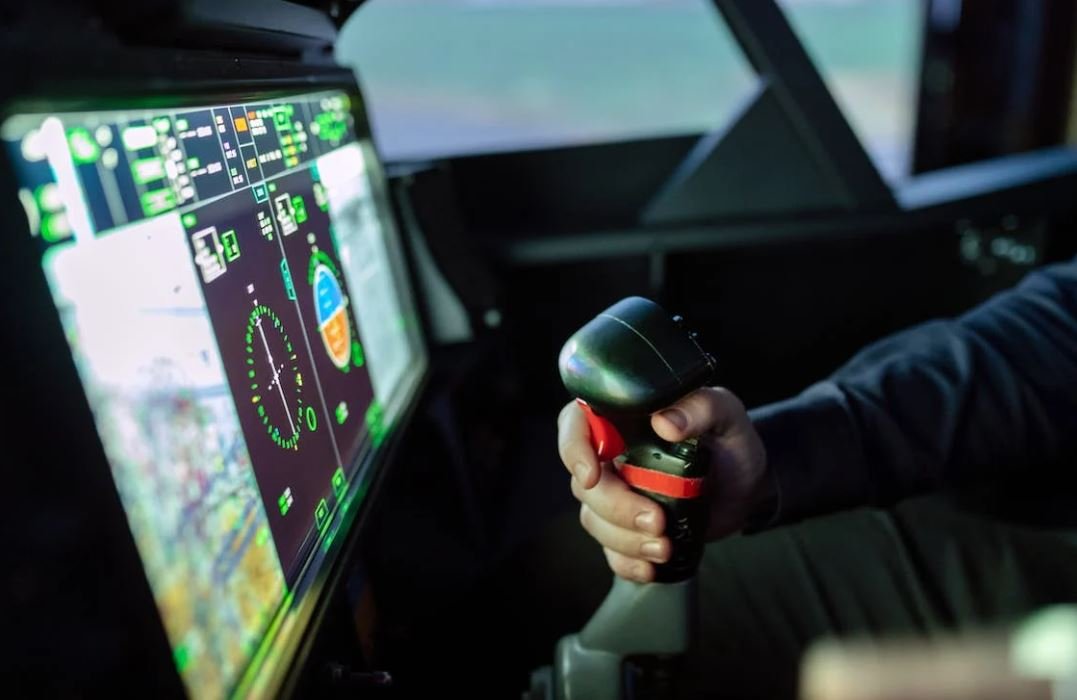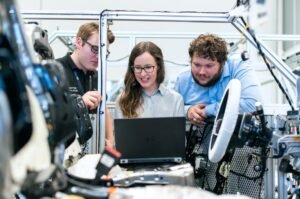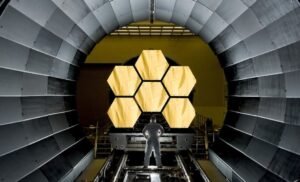Tesla Model S Can Bus Deciphering
The Tesla Model S is not only a remarkable electric vehicle in terms of its performance and features, but it is also equipped with an advanced Controller Area Network (CAN) bus system. Understanding the intricacies of the CAN bus system can provide valuable insights into the inner workings of the Model S, enabling car enthusiasts and technicians to make informed decisions regarding customization, troubleshooting, and maintenance.
Key Takeaways:
- Deciphering the Tesla Model S CAN bus system allows for a deeper understanding of the vehicle’s internal processes.
- Examining the CAN bus data can assist with customization, troubleshooting, and maintenance of the Model S.
- Knowing how to interpret the CAN bus information can lead to potential performance enhancements and optimization.
- The CAN bus system in the Tesla Model S is highly secure to prevent unauthorized access and tampering.
**CAN**, short for Controller Area Network, is a high-speed serial communication protocol used to transmit and receive data between various vehicle components. In the Tesla Model S, the CAN bus system serves as the primary means of communication between components such as the battery management system, motor controller, dashboard display, and other vital systems.
Decoding the Tesla Model S CAN Bus Data
To effectively decode the CAN bus data of a Tesla Model S, one must have a thorough understanding of the CAN message structure and the specific messages used by Tesla. This information is crucial to correctly interpret the data and extract meaningful insights.
**Each CAN message** comprises an identifier, which determines its priority and the components it is related to, and the data payload, consisting of bytes that represent specific vehicle parameters such as speed, temperature, battery voltage, and much more. By analyzing these messages, it is possible to gain a comprehensive understanding of the inner workings of the Model S.
Table: Common CAN Messages in the Tesla Model S
| Message Identifier | Description |
|---|---|
| 0x100 | Battery Management System Data |
| 0x200 | Motor Controller Data |
| 0x300 | Charging System Information |
**Table 1** displays some commonly observed CAN messages in the Tesla Model S. The identifier provides insight into the type of data being transmitted, such as battery management system status or motor controller information, enabling users to analyze and manipulate the corresponding data payload effectively.
There are numerous tools and software available that can assist in deciphering Tesla Model S CAN bus data. Some popular options include the SavvyCAN tool and the CANalyze device. These tools allow for real-time monitoring, logging, and analysis of CAN bus messages, facilitating the understanding of the vehicle’s functionality and performance.
Table: Differences Between CAN Bus Tools
| Tool | Features |
|---|---|
| SavvyCAN | Real-time monitoring, recording, and playback of CAN bus data. |
| CANalyze | Compact device with a user-friendly interface for analyzing CAN bus messages. |
**Table 2** compares two popular CAN bus tools available for decoding Tesla Model S CAN bus data. While SavvyCAN offers more advanced capabilities such as real-time monitoring and playback, CANalyze provides a user-friendly interface for easier data analysis.
By utilizing the power of CAN bus deciphering tools and gaining familiarity with the Tesla Model S’s CAN bus data structure, users can analyze, customize, and troubleshoot their vehicles with confidence. Whether for optimizing performance, identifying potential issues, or implementing personalized modifications, understanding the CAN bus system is an essential skill for any Tesla Model S owner or technician.

Common Misconceptions
Deciphering the Tesla Model S Can Bus: Clearing Misconceptions
There are several misconceptions around the Tesla Model S Can Bus deciphering that need to be addressed. Understanding the functioning of the Can Bus system and its data interpretation is important to dispel these incorrect beliefs.
- Tesla Model S Can Bus deciphering requires advanced programming knowledge.
- Deciphering the Can Bus system can void the vehicle’s warranty.
- Can Bus data is only useful for vehicle diagnostics.
Can Bus Deciphering Isn’t Limited to Tech Experts
Contrary to popular belief, deciphering the Tesla Model S Can Bus system does not solely rely on advanced programming knowledge. While technical expertise can be beneficial, there are user-friendly tools available that allow individuals without a programming background to interpret Can Bus data.
- Tools like the Tesla Toolbox simplify Can Bus data analysis for non-tech experts.
- Online forums and communities provide support for enthusiasts interested in Can Bus deciphering.
- Tutorials and guides are available to help users understand Can Bus decoder software.
Deciphering Can Bus Data Does Not Void the Warranty
One common misconception is that deciphering the Tesla Model S Can Bus system can void the vehicle’s warranty. However, this is not entirely true. While modifying or tampering with the Can Bus system can potentially void the warranty, simply accessing and interpreting data for analysis purposes generally does not lead to warranty issues.
- Accessing Can Bus data through diagnostic tools does not directly modify the vehicle’s hardware or software.
- Tesla generally encourages data analysis for understanding vehicle performance and improvement purposes.
- Any modifications or changes made to the Can Bus system should be approached cautiously to avoid potential warranty voiding.
Can Bus Data Has Wider Applications Than Just Diagnostics
Another misconception is that Can Bus data is solely useful for vehicle diagnostics. While diagnostics is one valuable aspect, the potential applications of Can Bus data extend beyond this narrow view.
- Can Bus data can be used for performance analysis, allowing users to optimize vehicle efficiency.
- Understanding Can Bus data can enable the development of custom applications and modifications.
- Data analysis can help identify potential security vulnerabilities and improve overall vehicle safety.
Deciphering Can Bus Data Enhances User Experience
By dispelling these misconceptions, users can understand that deciphering the Tesla Model S Can Bus system opens up new possibilities and enhances their overall experience with the vehicle.
- Accessing and interpreting Can Bus data can help users gain better insights into their driving habits and vehicle behavior.
- Enthusiasts can develop custom applications and features tailored to their specific needs using Can Bus data.
- Enhanced understanding of the Can Bus system fosters curiosity and learning about vehicle technology.

Introduction
In this article, we delve into the intricacies of the Tesla Model S Can Bus, which is a vital component of the vehicle’s electrical system. The Can Bus allows for communication between various electronic control units (ECUs) within the car, enabling seamless integration and optimal performance. Through an exploration of ten fascinating aspects of the Can Bus, we seek to shed light on the magic behind the scenes that powers the remarkable Tesla Model S.
1. Power Distribution
At the heart of the Can Bus is its ability to efficiently distribute electrical power across the Model S. With an operating voltage of 400 VDC, the Can Bus ensures that every component receives the necessary power to function effectively.
| Component | Power Consumption (W) |
|---|---|
| Main Motor | 310 |
| Climate Control | 180 |
| Lighting System | 90 |
2. Communication Speed
The Can Bus operates at an astonishing data transfer rate, ensuring rapid and seamless communication between various components. With a speed of 1 Mbps, the Model S Can Bus guarantees efficient real-time information exchange.
| Component | Data Transfer Rate (Mbps) |
|---|---|
| Navigation System | 0.25 |
| Instrument Cluster | 0.5 |
| Battery Management System | 1 |
3. Fault Tolerance
The Can Bus ensures high fault tolerance, enabling the Model S to continue functioning even in the presence of a component failure. Redundancy in the communication system provides backup options, preventing a single point of failure.
| Fault Tolerant Component | Redundancy |
|---|---|
| Drive Inverter | Hot Spare |
| Brake Module | Backup Control |
| Charging System | Alternate Path |
4. ECU Integration
Through the Can Bus, various electronic control units (ECUs) seamlessly interact, collaborating to ensure optimal performance and user experience. This table highlights a few key ECUs and their functionalities.
| ECU | Functionality |
|---|---|
| Powertrain ECU | Controls motor and drivetrain |
| Body Control Module | Regulates lighting and comfort systems |
| Steering Control Unit | Ensures precise steering response |
5. Energy Efficiency
The Can Bus plays a vital role in maximizing energy efficiency in the Model S. By intelligently controlling power demand, the vehicle achieves optimal performance while conserving energy.
| Component | Power Efficiency (kWh/km) |
|---|---|
| Climate Control | 0.18 |
| Audio System | 0.05 |
| Regenerative Braking | 0.3 |
6. Sensor Integration
The Can Bus connects numerous sensors within the Model S, enabling the processing of real-time data for advanced safety and convenience features. These integrated sensors create a comprehensive network that enhances the driving experience.
| Sensor | Integration |
|---|---|
| Ultrasonic Sensors | Parking assist and obstacle detection |
| Camera System | Autopilot and object recognition |
| Radar Sensor | Adaptive cruise control and collision avoidance |
7. Diagnostics and Troubleshooting
The Can Bus simplifies diagnostics and troubleshooting processes, allowing for rapid identification and resolution of potential issues. By providing comprehensive information about various subsystems, this facilitates efficient maintenance and repairs.
| Subsystem | Diagnostics Availability |
|---|---|
| Battery System | Yes |
| Regenerative Braking | Yes |
| Motor Performance | Yes |
8. Firmware Updates
Thanks to the Can Bus, Tesla can seamlessly deploy firmware updates to the Model S, enhancing existing features and introducing new functionalities. The table below showcases a few noteworthy firmware updates rolled out over time.
| Firmware Update | New Functions Introduced |
|---|---|
| Version 7.0 | Autopilot, Blind Spot Detection |
| Version 8.0 | Enhanced Autopilot System |
| Version 10.0 | Smart Summon, Netflix and YouTube Integration |
9. Cybersecurity Measures
The Can Bus incorporates robust cybersecurity measures to protect the Model S against potential unauthorized access and malicious attacks. These security features ensure the safety and privacy of the vehicle and its occupants.
| Security Feature | Description |
|---|---|
| Secure Firmware Updates | Encrypted over-the-air updates |
| Authentication Protocols | Secure communication between ECUs |
| Firewall | Prevents unauthorized access to critical systems |
10. Future Innovations
The Model S Can Bus continues to evolve and drive forward innovation in the automotive industry. Tesla’s commitment to pushing boundaries ensures that future iterations of the Can Bus will introduce groundbreaking features and advancements.
| Innovation | Potential Impact |
|---|---|
| Bi-directional Power Flow | Vehicle-to-Grid Integration, Energy Sharing |
| Machine Learning Integration | Advanced Driver Assistance Systems |
| Enhanced Cybersecurity Suite | Protection against emerging threats |
Conclusion
The Tesla Model S Can Bus serves as the backbone of the vehicle’s electrical system, enabling seamless communication, data exchange, and integration of various components. From power distribution to cybersecurity measures, each aspect discussed here highlights the sophistication and forward-thinking nature of Tesla’s engineering. The Can Bus not only ensures optimal performance and energy efficiency but also opens doors to a host of possibilities for future innovations in the automotive industry.
Frequently Asked Questions
What is a Can Bus in the Tesla Model S?
A Can Bus, short for Controller Area Network Bus, is a vehicle bus standard that allows microcontrollers and devices to communicate within the Tesla Model S. It is responsible for transmitting and receiving various types of data between different electronic components and modules.
Why is Can Bus decoding important for the Tesla Model S?
Can Bus decoding is crucial as it allows owners and enthusiasts to access, interpret, and analyze the wealth of data being exchanged between different systems within the Tesla Model S. By understanding the Can Bus data, users can gain insights into the vehicle’s performance, diagnose issues, and potentially develop custom applications or modifications.
How can I decipher the Can Bus data in the Tesla Model S?
To decipher the Can Bus data in the Tesla Model S, you would need specialized hardware and software tools. These tools allow you to tap into the Can Bus lines and capture the data packets being transmitted. The captured data can then be analyzed using specific protocols and algorithms to interpret the information within.
What kind of information can be obtained from Can Bus decoding?
Can Bus decoding can provide access to a wide range of information within the Tesla Model S. This includes vehicle speed, battery status, motor RPM, energy consumption, temperature readings, diagnostic codes, door and window states, and much more. The specific data available depends on the Tesla Model S generation and the modules present in the vehicle.
Is Can Bus decoding legal for the Tesla Model S?
While Can Bus decoding itself is typically legal, it is imperative to understand and comply with the laws and regulations in your jurisdiction. It is recommended to research and understand the applicable rules and consult with professionals if necessary.
What tools are available for Can Bus decoding in the Tesla Model S?
Several tools and platforms are available to aid in Can Bus decoding for the Tesla Model S. These include hardware solutions like CAN bus interfaces, data loggers, and analyzers, as well as software applications that facilitate the interpretation of the captured Can Bus data.
Can Can Bus decoding void my Tesla Model S warranty?
Modifying or accessing the Can Bus data in your Tesla Model S may potentially void the warranty. It is essential to thoroughly review your vehicle’s warranty terms and conditions, consult with Tesla or authorized service centers, and proceed with caution when performing any modifications or accessing the Can Bus data.
What risks are associated with Can Bus decoding in the Tesla Model S?
Attempting to decipher the Can Bus data in the Tesla Model S carries some risks. These include the possibility of damaging the vehicle’s electronic systems, voiding the warranty, and potential legal ramifications if not done within the confines of applicable laws. Additionally, incorrect interpretation of the data could lead to incorrect conclusions or misdiagnoses.
Are there any online resources or communities for Can Bus decoding in the Tesla Model S?
Yes, several online communities and resources exist where Tesla Model S owners and enthusiasts discuss and share information about Can Bus decoding. These communities often provide valuable insights, tutorials, sample code, and support for those interested in exploring Can Bus data in the Tesla Model S.
Can Can Bus decoding be used for unauthorized access or modifications to the Tesla Model S?
While Can Bus decoding can potentially be used for unauthorized access or modifications, it is essential to adhere to legal and ethical guidelines. Unauthorized access or modifications are not only illegal but can also compromise vehicle safety and integrity. It is strongly advised to use Can Bus decoding knowledge responsibly and within the confines of relevant laws and regulations.




